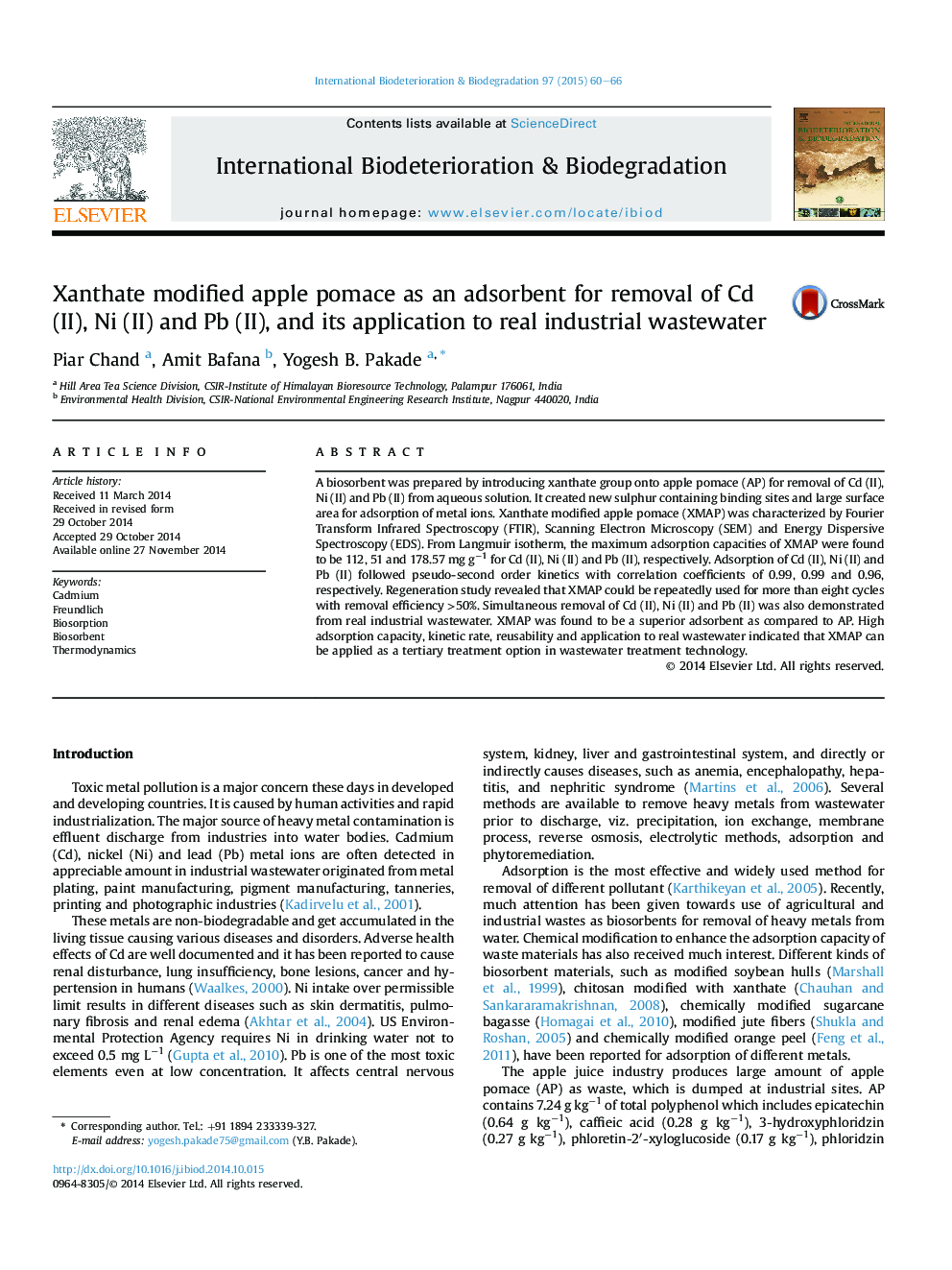| Article ID | Journal | Published Year | Pages | File Type |
|---|---|---|---|---|
| 4364667 | International Biodeterioration & Biodegradation | 2015 | 7 Pages |
•Removal of Cd (II), Ni (II) and Pb (II) is proposed using XMAP.•XMAP was characterized by FTIR, SEM and EDS before and after adsorption.•Langmuir, Freundlich, kinetic and thermodynamic models were applied.•Advantage of regeneration makes XMAP a better adsorbent.
A biosorbent was prepared by introducing xanthate group onto apple pomace (AP) for removal of Cd (II), Ni (II) and Pb (II) from aqueous solution. It created new sulphur containing binding sites and large surface area for adsorption of metal ions. Xanthate modified apple pomace (XMAP) was characterized by Fourier Transform Infrared Spectroscopy (FTIR), Scanning Electron Microscopy (SEM) and Energy Dispersive Spectroscopy (EDS). From Langmuir isotherm, the maximum adsorption capacities of XMAP were found to be 112, 51 and 178.57 mg g−1 for Cd (II), Ni (II) and Pb (II), respectively. Adsorption of Cd (II), Ni (II) and Pb (II) followed pseudo-second order kinetics with correlation coefficients of 0.99, 0.99 and 0.96, respectively. Regeneration study revealed that XMAP could be repeatedly used for more than eight cycles with removal efficiency >50%. Simultaneous removal of Cd (II), Ni (II) and Pb (II) was also demonstrated from real industrial wastewater. XMAP was found to be a superior adsorbent as compared to AP. High adsorption capacity, kinetic rate, reusability and application to real wastewater indicated that XMAP can be applied as a tertiary treatment option in wastewater treatment technology.
